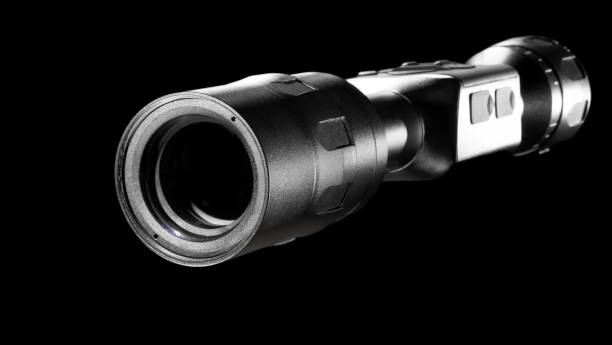Bird watching is a cherished pastime that allows enthusiasts to connect with nature and observe the beauty of avian life. To truly appreciate the intricate details and behaviors of our feathered friends, having the right pair of binoculars is essential. In this article, we will explore the top binoculars specifically designed for bird watching, considering factors such as magnification, field of view, and image clarity.
The Art and Joy of Bird Watching
Bird watching, or birding, is a hobby that transcends age and geographical boundaries. Whether you are a beginner or a seasoned birder, the thrill of spotting a rare species or observing the intricate details of familiar birds is a source of joy and fascination. A crucial tool in the arsenal of any bird watcher is a reliable pair of binoculars, enhancing the overall birding experience by bringing distant birds into clear focus.
Key Features to Consider
1. Magnification and Objective Lens Diameter
Magnification is a critical factor in bird-watching binoculars. Higher magnification allows for a closer view of birds, but it can also result in a narrower field of view and shakier images, especially when hand-held. Common magnifications for birding binoculars range from 8x to 10x, providing a good balance between detail and stability.
The objective lens diameter, measured in millimeters, influences the amount of light the binoculars can gather. Larger objective lenses allow for better performance in low-light conditions, such as dawn or dusk birding sessions.
2. Field of View
A wide field of view is advantageous in bird watching as it enables birders to scan larger areas and locate birds more easily. Binoculars with a generous field of view are particularly useful in dense foliage or when observing birds in flight. Field of view is expressed in feet at a specific distance, with wider values indicating a broader view.
3. Close Focus Distance
The close focus distance refers to the minimum distance at which binoculars can focus clearly. For bird watchers who enjoy observing the intricate details of nearby birds, a shorter close focus distance is desirable. This feature is particularly important when birds come close to bird feeders or are perched on branches nearby.
Top Binoculars for Bird Watching
1. Vortex Optics Diamondback HD 8x42
Vortex Optics is a well-known name in the optics industry, and the Diamondback HD 8x42 binoculars live up to the brand's reputation. With an 8x magnification and a 42mm objective lens diameter, these binoculars strike a perfect balance for bird watching.
The HD extra-low dispersion glass delivers impressive color fidelity and sharpness, allowing birders to appreciate the subtle details of plumage. With a wide field of view of 393 feet at 1000 yards, the Diamondback HD ensures that you won't miss any feathered visitor in your field of vision. The close focus distance of 6 feet is ideal for observing birds at close range.
2. Nikon Monarch 7 10x42
Nikon is synonymous with quality optics, and the Monarch 7 10x42 binoculars are no exception. With a 10x magnification and a 42mm objective lens diameter, these binoculars provide a closer view of distant birds without sacrificing too much field of view.
The extra-low dispersion glass and dielectric high-reflective multilayer prism coating contribute to bright and clear images. The Monarch 7 features a wide field of view of 351 feet at 1000 yards, making it suitable for birders who want a balance between magnification and a broad perspective. With a close focus distance of 8.2 feet, these binoculars are versatile for various birding scenarios.
3. Celestron TrailSeeker 8x42
The Celestron TrailSeeker 8x42 binoculars are designed with the needs of bird watchers in mind. The 8x magnification and 42mm objective lens diameter strike a harmonious balance for birding enthusiasts. These binoculars feature phase and dielectric-coated BaK-4 prisms for enhanced image brightness and contrast.
With a wide field of view of 426 feet at 1000 yards, the TrailSeeker allows birders to scan large areas effortlessly. The close focus distance of 6.5 feet is advantageous for observing birds near. The lightweight and durable magnesium alloy body makes these binoculars comfortable for extended use in the field.
Tips for an Enhanced Bird-Watching Experience
Choose the Right Location: Different bird species inhabit various habitats. Research and choose locations that cater to the types of birds you want to observe, whether it's wetlands, forests, or urban parks.
Practice Patience: Bird-watching requires patience and stillness. Find a comfortable spot, stay quiet, and allow the birds to become accustomed to your presence. The more patient you are, the more natural behaviors you'll witness.
Learn Bird Calls: Familiarizing yourself with bird calls enhances your ability to identify species even before spotting them. There are many apps and online resources available for learning bird songs.
Invest in a Field Guide: A good field guide helps you identify birds based on their features, behavior, and habitat. Consider a guide specific to your region for accurate identification.
Use Camouflage Gear: Birds are sensitive to movement. Wearing camouflage clothing and using natural covers like blinds or foliage helps you blend into the environment, making it easier to observe birds without causing disturbance.
Conclusion
Bird watching is a rewarding and immersive hobby that allows enthusiasts to connect with nature and appreciate the diversity of avian life. The right pair of binoculars can significantly enhance the birding experience, bringing feathered friends into sharp focus with clarity and precision. Whether you choose the Vortex Optics Diamondback HD, Nikon Monarch 7, or Celestron TrailSeeker, each of these binoculars offers unique features to cater to the needs of bird watchers. With the perfect pair of binoculars in hand, you'll be ready to embark on a journey of discovery, exploring the world of feathered friends in all their fascinating glory. Get advice from us to choose the most suitable Night Vision Scope.





Comments